
In love with remote islands.
#globalchange #biodiversity #ecology #paleoecology #benthos #Bryozoa #microbiome




🔗 icm.csic.es/ca/oferta-tr...
🔗 icm.csic.es/ca/oferta-tr...
@em-oyster.bsky.social @bryozoology.bsky.social


🔗 icm.csic.es/ca/oferta-tr...
🔗 icm.csic.es/ca/oferta-tr...
@em-oyster.bsky.social @bryozoology.bsky.social
🔗 zookeys.pensoft.net/article/1579...

🔗 zookeys.pensoft.net/article/1579...



📈 Higher microbial diversity
📈 Opportunistic bacteria like Woeseia & Pelagibius thrived
📉 Beneficial/core taxa (Aquimarina, Vibrio) declined
This suggests early dysbiosis, a disrupted microbial balance ⚖️


📈 Higher microbial diversity
📈 Opportunistic bacteria like Woeseia & Pelagibius thrived
📉 Beneficial/core taxa (Aquimarina, Vibrio) declined
This suggests early dysbiosis, a disrupted microbial balance ⚖️


🔗 www.icm.csic.es/ca/noticia/e...
@fonamental.bsky.social @elpiratavell.bsky.social @polcapdevila.bsky.social
@commsbio.nature.com @natureportfolio.nature.com


🔗 www.icm.csic.es/ca/noticia/e...
@fonamental.bsky.social @elpiratavell.bsky.social @polcapdevila.bsky.social
@commsbio.nature.com @natureportfolio.nature.com
Bryozoans are key habitat-formers, yet often overlooked in climate research.
Our work shows they’re at risk under future ocean conditions.
🌊 We need more long-term, multi-stressor studies in natural settings. Stay tuned for the ongoing HOLOCHANGE and MedAcidWarm projects!
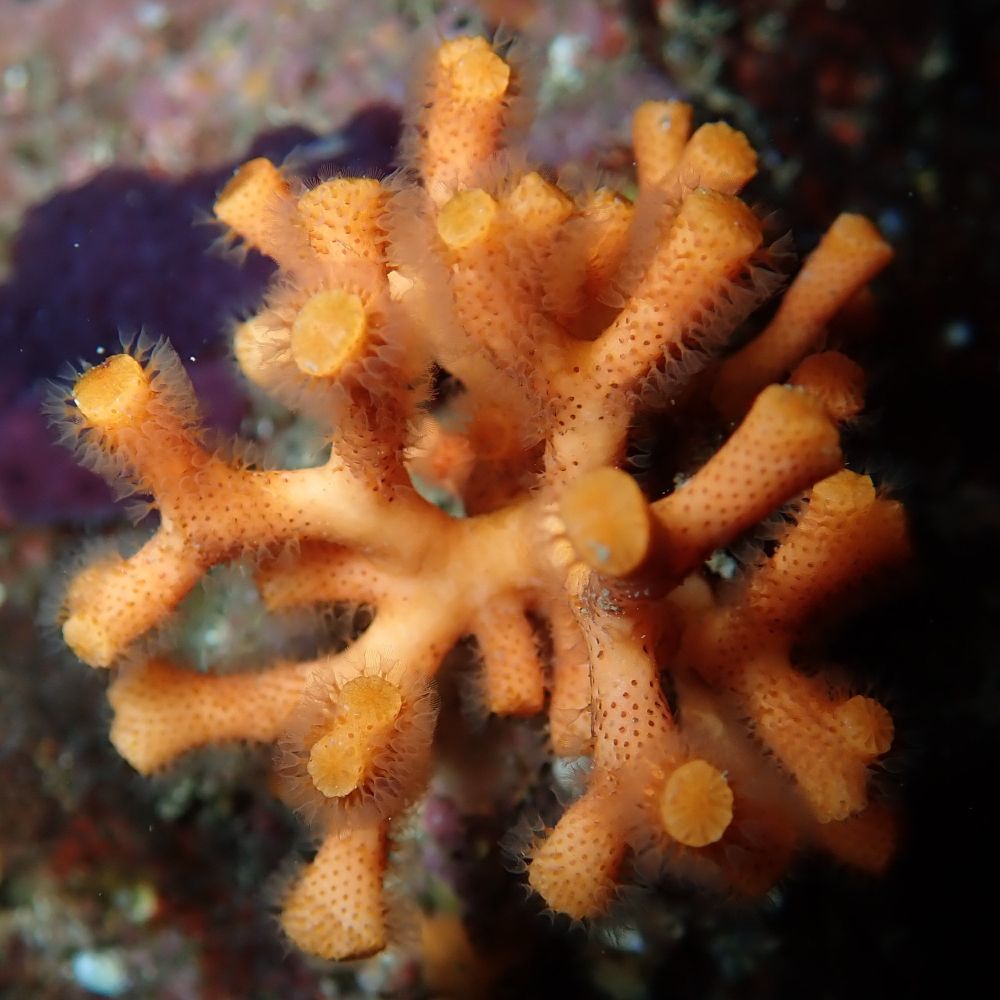
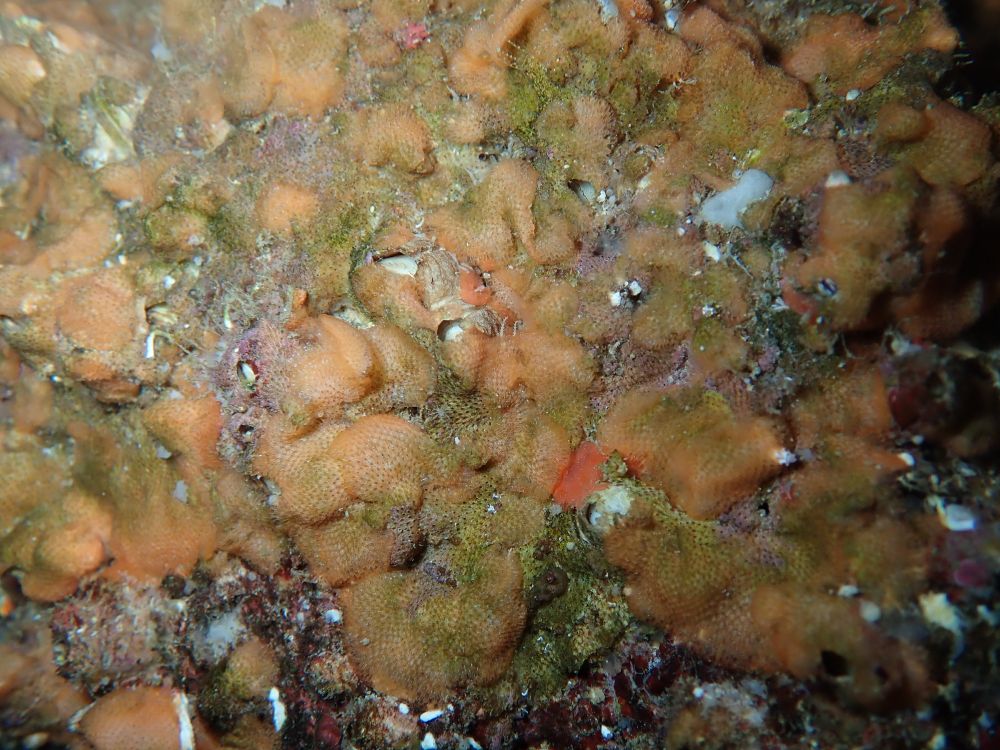
Bryozoans are key habitat-formers, yet often overlooked in climate research.
Our work shows they’re at risk under future ocean conditions.
🌊 We need more long-term, multi-stressor studies in natural settings. Stay tuned for the ongoing HOLOCHANGE and MedAcidWarm projects!
This is the first study to document long-term microbiome and skeletal responses to combined ocean acidification & warming in bryozoans in the wild.
We reveal:
✅ Complex, species-specific strategies
⚠️ Signs of vulnerability under future ocean conditions
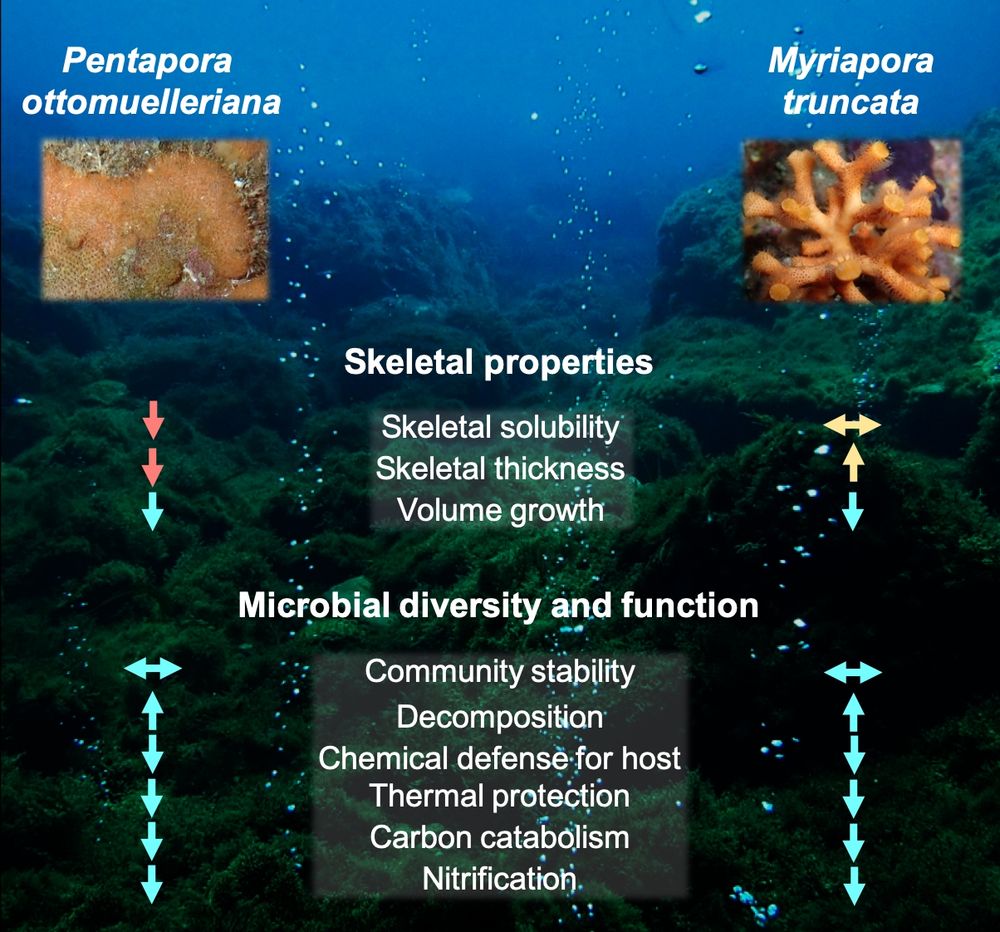
This is the first study to document long-term microbiome and skeletal responses to combined ocean acidification & warming in bryozoans in the wild.
We reveal:
✅ Complex, species-specific strategies
⚠️ Signs of vulnerability under future ocean conditions
What about long-term effects?
We monitored Pentapora populations over 5 years:
📉 Bryozoan cover declined
☠️ Necrosis increased
🌡️ Warming & acidification together accelerated mortality
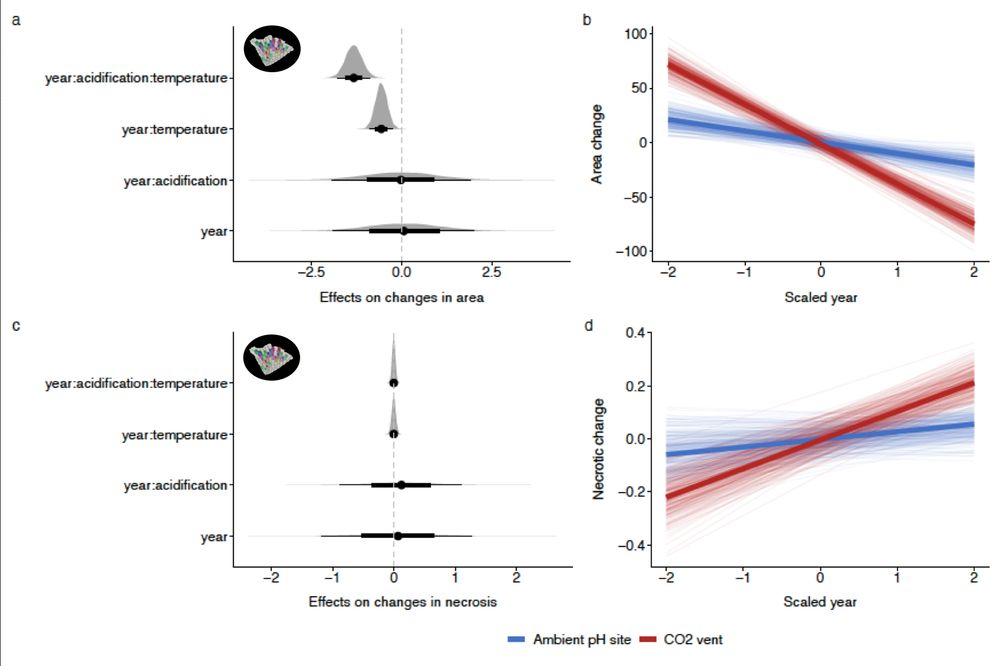
What about long-term effects?
We monitored Pentapora populations over 5 years:
📉 Bryozoan cover declined
☠️ Necrosis increased
🌡️ Warming & acidification together accelerated mortality
But not all are good news...
We also observed:
📉 Loss of key microbial genera
☠️Rise of opportunists & anaerobes
These microbial shifts may signal early dysbiosis — an early warning of declining host health.

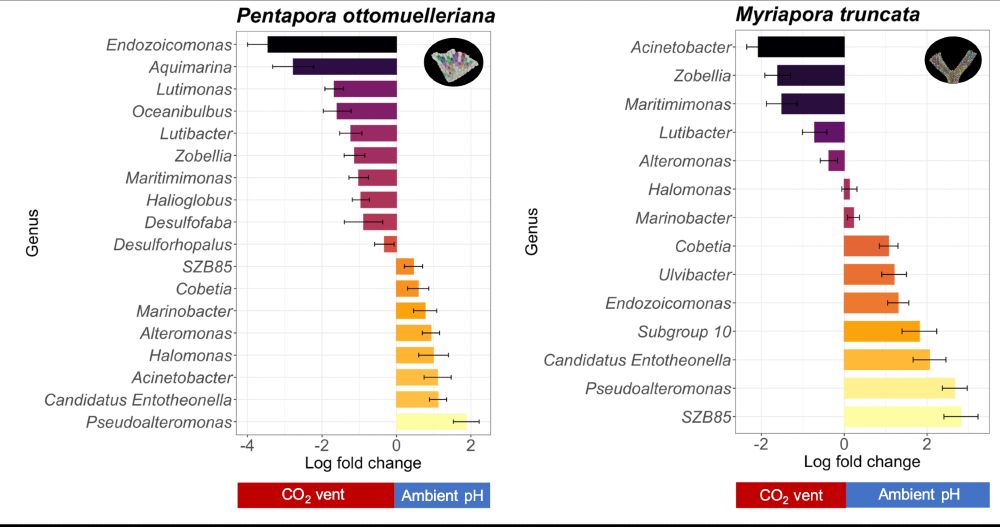
But not all are good news...
We also observed:
📉 Loss of key microbial genera
☠️Rise of opportunists & anaerobes
These microbial shifts may signal early dysbiosis — an early warning of declining host health.
🦠 Microbial communities:
We found species-specific core microbiomes, conserved across both pH conditions.
This stability suggests potential acclimatization capacity in both species despite environmental stress.
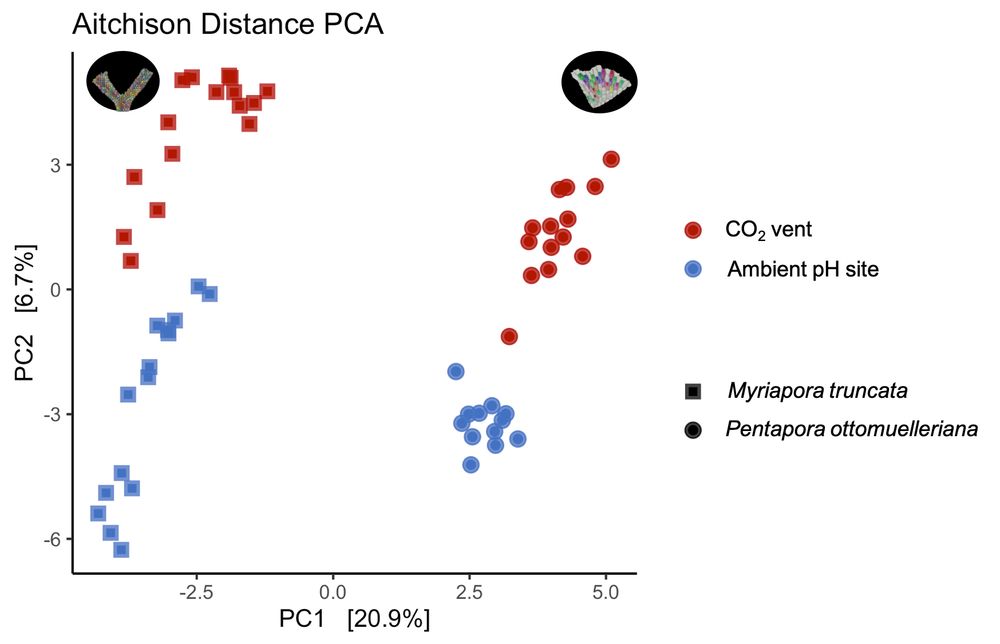
🦠 Microbial communities:
We found species-specific core microbiomes, conserved across both pH conditions.
This stability suggests potential acclimatization capacity in both species despite environmental stress.
🧱 Mineral & skeletal structure:
The two species showed opposing strategies to low pH.
🦪 P. ottomuelleriana reduced Mg-calcite & zooid volume
🪸 M. truncata thickened its skeleton
→ Different energy trade-offs to maintain calcification under stress
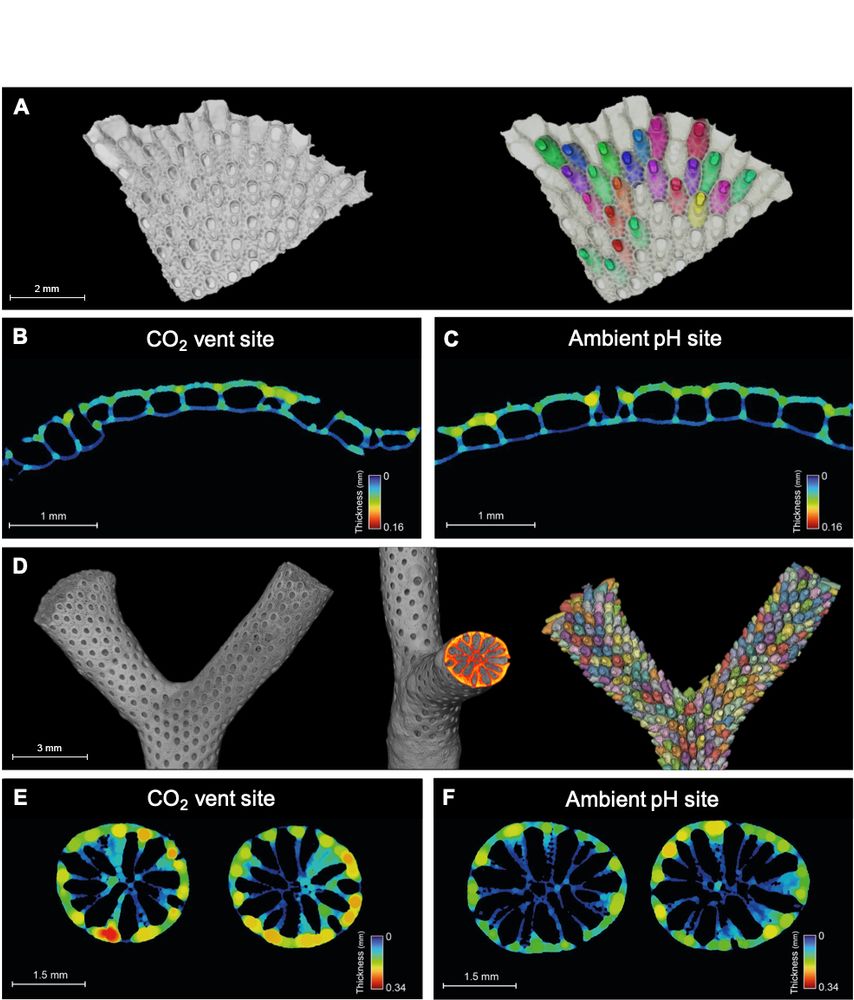
🧱 Mineral & skeletal structure:
The two species showed opposing strategies to low pH.
🦪 P. ottomuelleriana reduced Mg-calcite & zooid volume
🪸 M. truncata thickened its skeleton
→ Different energy trade-offs to maintain calcification under stress
We focused on two species:
🦪 Pentapora ottomuelleriana (fast-growing, encrusting)
🪸 Myriapora truncata (slow-growing, erect)
They naturally occur inside & outside a Mediterranean CO₂ vent. 🌋
We also used 3D micro-CT scans to visualize how their skeletons change.
We focused on two species:
🦪 Pentapora ottomuelleriana (fast-growing, encrusting)
🪸 Myriapora truncata (slow-growing, erect)
They naturally occur inside & outside a Mediterranean CO₂ vent. 🌋
We also used 3D micro-CT scans to visualize how their skeletons change.
Why bryozoans?
🪸 They build reef-like structures
🌍 They're widespread + ecologically important
🦠 But largely understudied—especially their microbiomes!
We studied them at a volcanic CO₂ vent & a control site in Ischia Island, a "time machine" for future oceans.
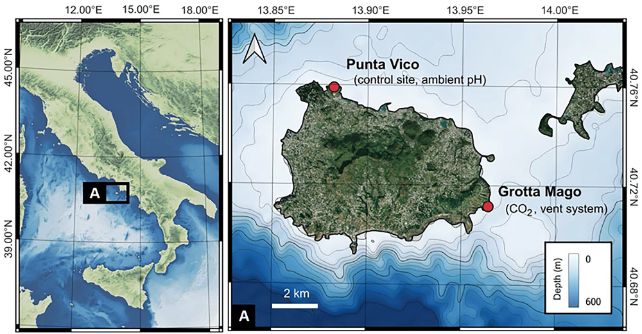
Why bryozoans?
🪸 They build reef-like structures
🌍 They're widespread + ecologically important
🦠 But largely understudied—especially their microbiomes!
We studied them at a volcanic CO₂ vent & a control site in Ischia Island, a "time machine" for future oceans.
Our new paper is out today in @commsbio.nature.com @natureportfolio.nature.com 🚨
🔗https://www.nature.com/articles/s42003-025-08524-8
We studied how two Mediterranean bryozoan species respond to ocean acidification & warming using a natural underwater CO₂ vent as a climate change lab. 🌊🧫
🧵⬇️
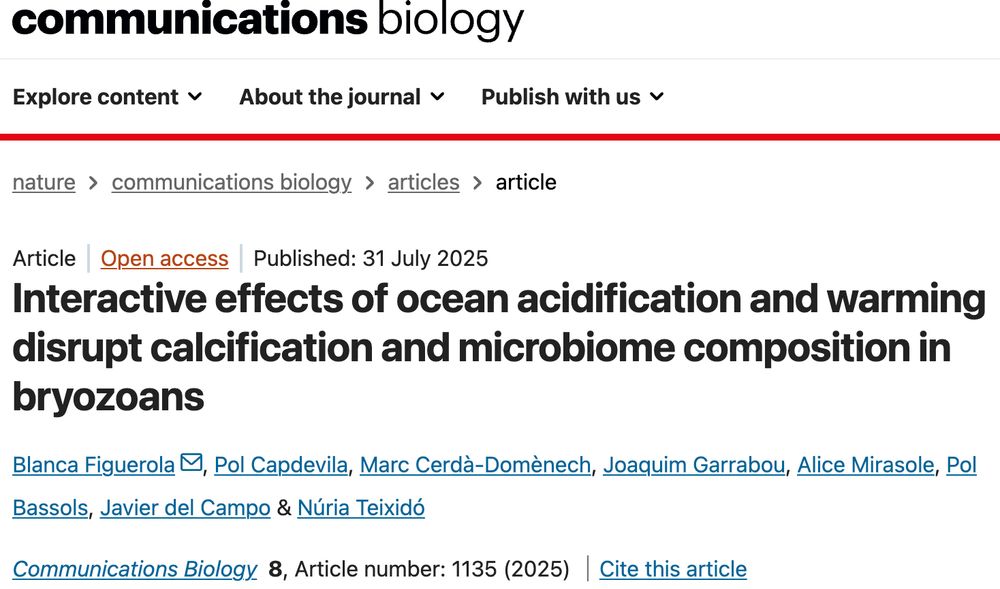
Our new paper is out today in @commsbio.nature.com @natureportfolio.nature.com 🚨
🔗https://www.nature.com/articles/s42003-025-08524-8
We studied how two Mediterranean bryozoan species respond to ocean acidification & warming using a natural underwater CO₂ vent as a climate change lab. 🌊🧫
🧵⬇️

Check this new report on this topic 👇
zenodo.org/records/1469...

Check this new report on this topic 👇
zenodo.org/records/1469...















